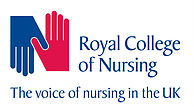On-site Health Surveillance

Protecting Employee Health
Regular health surveillance ensures the ongoing well-being of employees. By monitoring health over time, potential risks can be identified early, leading to timely interventions.
Enhancing Workplace Safety
A healthy workforce contributes to a safer work environment. Health surveillance helps in maintaining this safety by ensuring that workers are fit for their roles.
Legal Compliance
Adhering to legal requirements and HSE guidelines is vital for businesses. Health surveillance fulfils these obligations, preventing legal complications.
Enhancing Workplace Safety
A healthy workforce contributes to a safer work environment. Health surveillance helps in maintaining this safety by ensuring that workers are fit for their roles.
Key Components of Health Surveillance
Regular Health Checks
Scheduled medical examinations and assessments tailored to specific workplace hazards.
Benchmarking and Monitoring
Continuous evaluation of health data to track changes and identify trends over time.
Employee Education
Informing employees about potential risks and preventive measures related to their specific work environment.
Conclusion
On-site health surveillance is not just a legal requirement; it’s a commitment to employee health and safety. By implementing a comprehensive health surveillance program, businesses can ensure a healthier, safer, and more productive workplace.
FAQ Section
Health surveillance is a system of ongoing health checks for employees, particularly in environments with exposure to health risks.
It’s important for the early detection of occupational diseases, legal compliance, and ensuring workplace safety.
Employees exposed to noise, vibration, radiation, solvents, fumes, dust, or hazardous substances.
It involves regular health checks, monitoring, benchmarking, and employee education.
It helps in early identification and management of health risks, contributing to their overall well-being.
Yes, by early detection and intervention, it can prevent or mitigate occupational diseases.
Yes, it’s often required by law and HSE guidelines in certain work environments.
Absolutely, by ensuring the health of employees, it enhances overall workplace safety.



